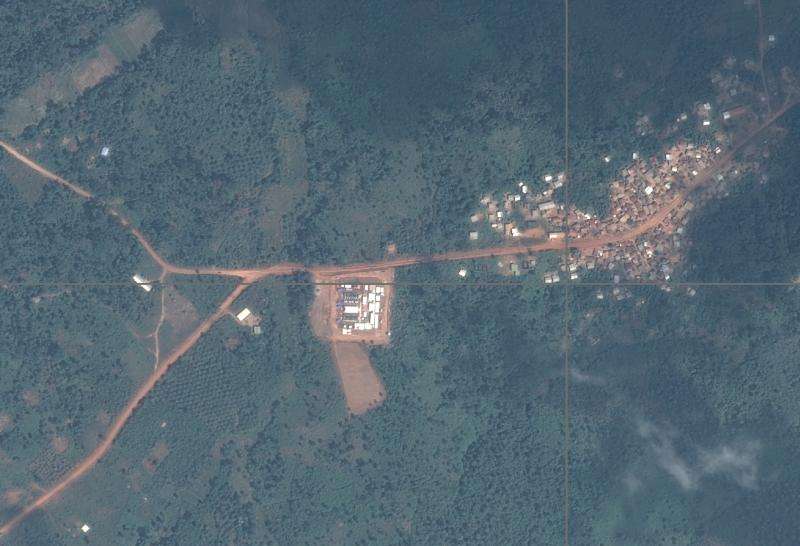ESA aids Ebola patients
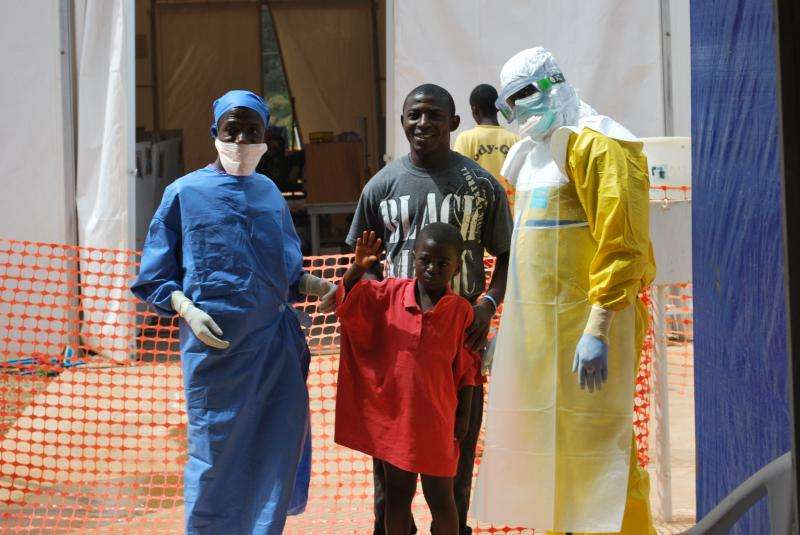
New antiviral drugs to treat Ebola patients in West Africa have been tested with the help of a transportable diagnostics laboratory developed with ESA's support.
B-LiFE, designed to speed up the diagnoses of pathogens in humanitarian and medical emergencies, includes a tent that is easy to set up, specialised equipment to inactivate and analyse blood samples, and an inflatable satellite antenna. It can be used anywhere, even in remote locations.
In many countries, even large hospitals do not always have the necessary equipment for rapid and reliable diagnosis and, very often, lack the qualified personnel.
Setting up a laboratory close to the centre of a crisis removes the need to transport samples over difficult terrain and long distances, which is dangerous and time consuming, carries the risk of spreading the disease, and requires considerable resources.
Typically, areas where B-LiFE might be needed lack robust communications facilities.
This was the case for Belgium's B-Fast emergency team that set up the laboratory at an Ebola treatment centre in N'Zerekore, Guinea, an area surrounded by forest and with no telecommunications infrastructure.
With B-LiFE, doctors could diagnose Ebola patients within hours of arrival and closely monitor the effects of new drugs and make changes to doses.
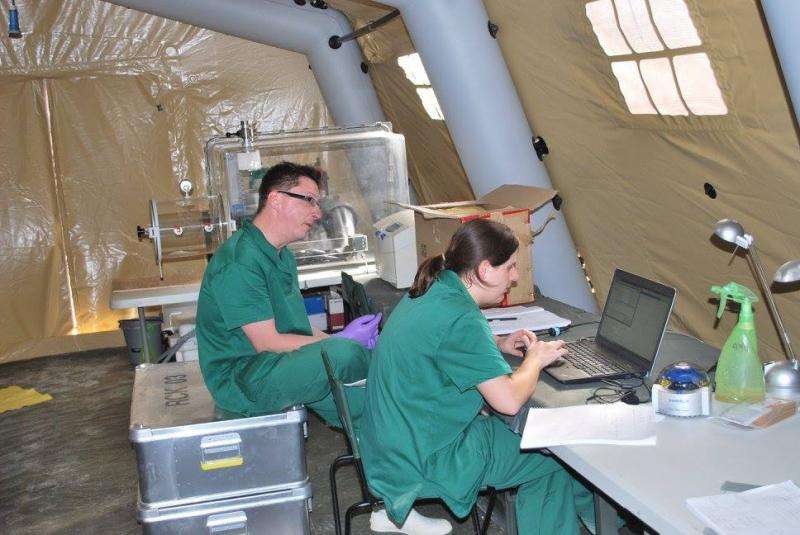
In the case of Ebola, treatment is dynamic – requirements can change by the hour, and can require consultation with specialists in immunology, haematology and paediatrics when children are involved.
The satcoms capability of B-LiFE worked seamlessly. Doctors running clinical trials of the new antivirals could collaborate in real time with the paediatric intensive care unit and haematology department of St Luc's hospital in Belgium to modify treatment plans as patient blood samples were analysed.
Supplies and spare parts could easily be ordered before they ran out, cutting delays and enabling the facility to be used continuously.
Humanitarian teams are often deployed over long periods, often 5–6 weeks for such missions. Satcoms enabled the B-Fast team to have regular contact with their families, boosting morale in often difficult climatic conditions and long shifts.
Before B-LiFE left Belgium for N'Zerekore, the EU Copernicus Emergency Management Service provided satellite images to help prepare the mission. Later, this information was also used to generate dynamic maps with epidemiological data to monitor the spread of the Ebola virus.
Satnav was used to track samples that had been collected, and equipment. Locating members of the field teams was critical for their safety. Many missions of this type operate in dangerous environments.
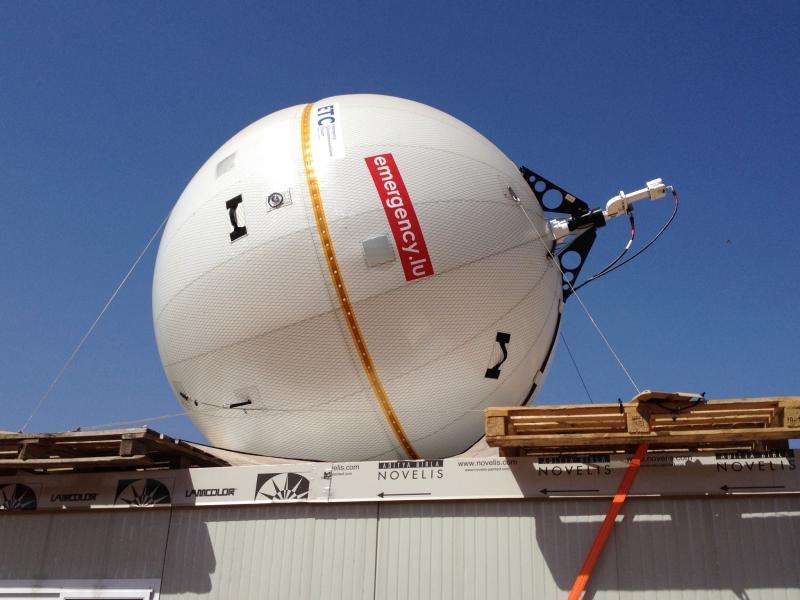
"What sets B-LiFE apart from other existing laboratories is that it utilises multiple space assets. This significantly improves the workflow and effectiveness of the laboratory," says Arnaud Runge, ESA's project manager.
"B-LiFE was fundamental in eradicating Ebola from the N'Zerekore region. This project demonstrates the great contribution space makes to saving lives."
The laboratory, developed within ESA's ARTES Integrated Applications Promotions programme, involved collaboration between Belgium's Center for Applied Molecular Technologies of the Université catholique de Louvain, Aurea Imaging, Eonix and Nazka Mapps. Satcom capacities were supplied by SES TechCom and Luxembourg's emergency.lu.
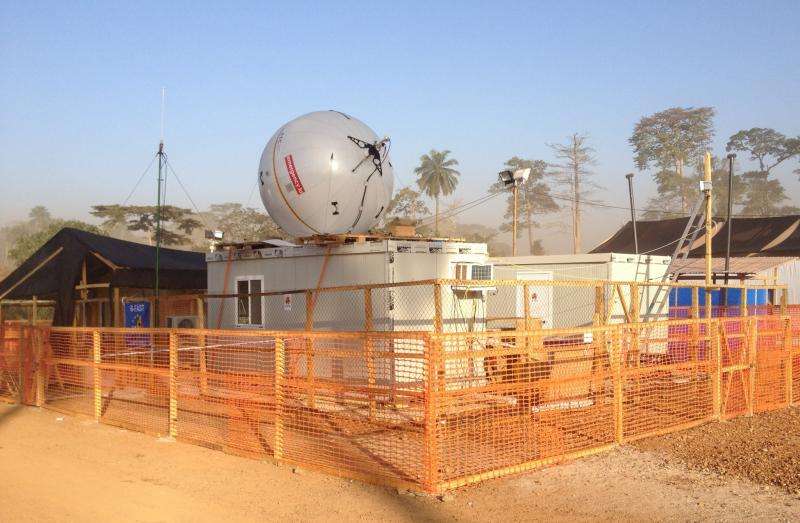
In December 2014, the B-LiFE service was registered in the European Emergency Capacity Response within the European Mechanism for Civil Protection managed by the European Commission.
"The B-LiFE Ebola mission has been a success and represents an important European advance – it is the first time that the 'voluntary pool' of the European Mechanism for Civil Protection has been activated," noted Roland Gueubel, B-LiFE Project Manager.
